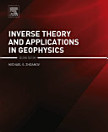Active Geophysical Monitoring: Edition 3
About this ebook
About the author
Hitoshi Mikada was a professor and is now an emeritus professor at Kyoto University, Japan. He received both M.S. and D.Sc. degrees in geophysics from the University of Tokyo in 1983 and 1994, respectively. He started his professional career as an interpretation engineer in the petroleum industry. In 1991, he started his academic career as a research associate at the Volcano Research Center of the Earthquake Research Institute of the University of Tokyo and as a senior scientist in the Deep-Sea Research Department of Japan Agency for Marine-Earth Science and Technology (JAMSTEC) from 1999 to 2004. In 2004, he moved to Kyoto University to become in charge of the geophysics laboratory. His main interests include research on theories and praxis in seismic scattering, wave propagation in attenuating and anisotropic media, seismic data processing,electromagnetic exploration, geophysical logging, etc.
Michael Zhdanov has been a professor at the University of Utah, Utah, United States, since 1993 and has been the director of CEMI since 1995. Hereceived a Ph.D. in 1970 from Moscow State University. He was a professor at the Moscow Academy of Oil and Gas and head of the Department of Deep Electromagnetic Study before moving to the University of Utah. He was awarded an Honorary Diploma of Gauss Professorship by the Göttingen Academy of Sciences, Germany, in 1990 and was elected a full member of the Russian Academy of Natural Sciences in 1991. He received an Honorary Professorship from the China National Center of Geological Exploration Technology in 1997 and an Honorary Membership Award from the Society of Exploration Geophysicists in 2013. Dr. Zhdanov was elected as a distinguished professor at the University of Utah in 2016. He has been a Fellow of the Electromagnetics Academy since 2002.
Junzo Kasahara received B.S., M.S., and D.Sc. degrees in geophysics from Nagoya University in 1965, 1967, and 1970, respectively. From 1970 to1986, and then from 1988 to 2004, he was an assistant, associate, and full professor at the University of Tokyo. He worked in marine seismology. During 1974, 1976, and 1979, he was a visiting associate professor at the University of Hawaii. In 1986, he joined Schlumberger Japan as a manager for seismic interpretation and logging tool design. During his academic work, he published three books with the University of Tokyo Press. He was awarded the title of professor emeritus at the University of Tokyo. In 2004, he joined the Tono Geoscience Center as a senior researcher, where he worked on the ACROSS project. Between 2004 and 2008, he served for the extension of the Japan Continental Shelf. Currently, he is the principalinvestigator of the geothermal project and a visiting professor at the University of Shizuoka.





